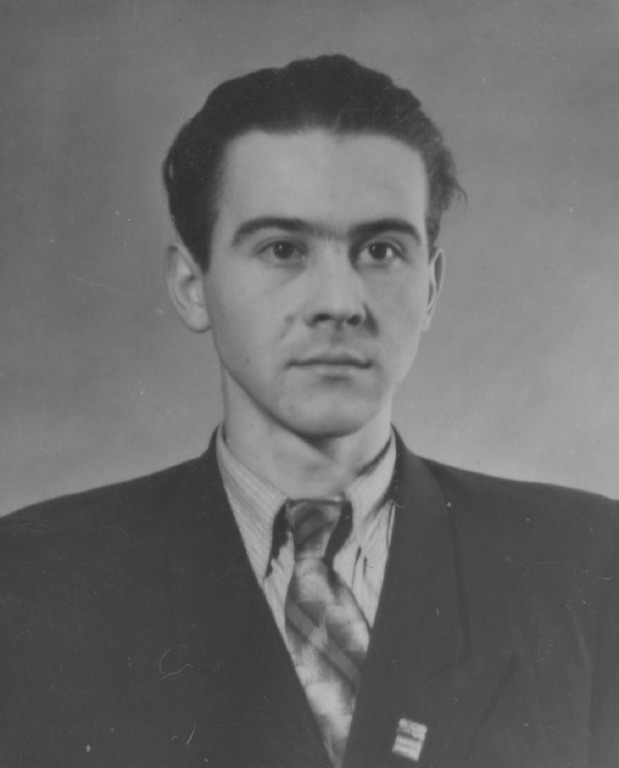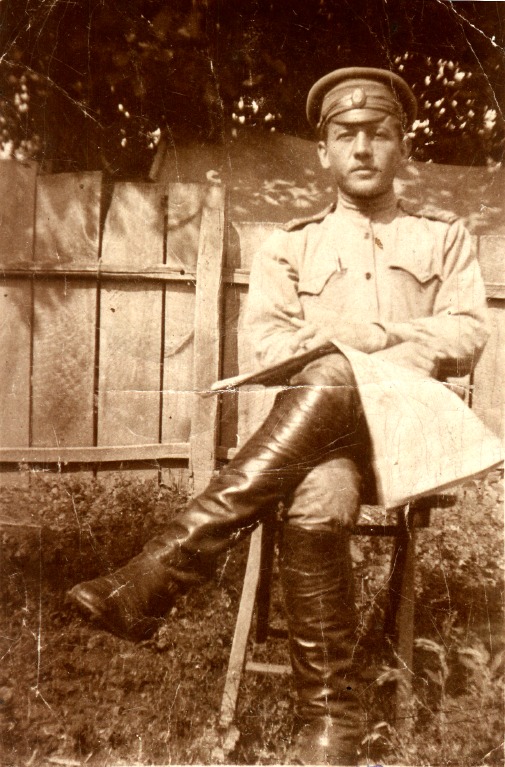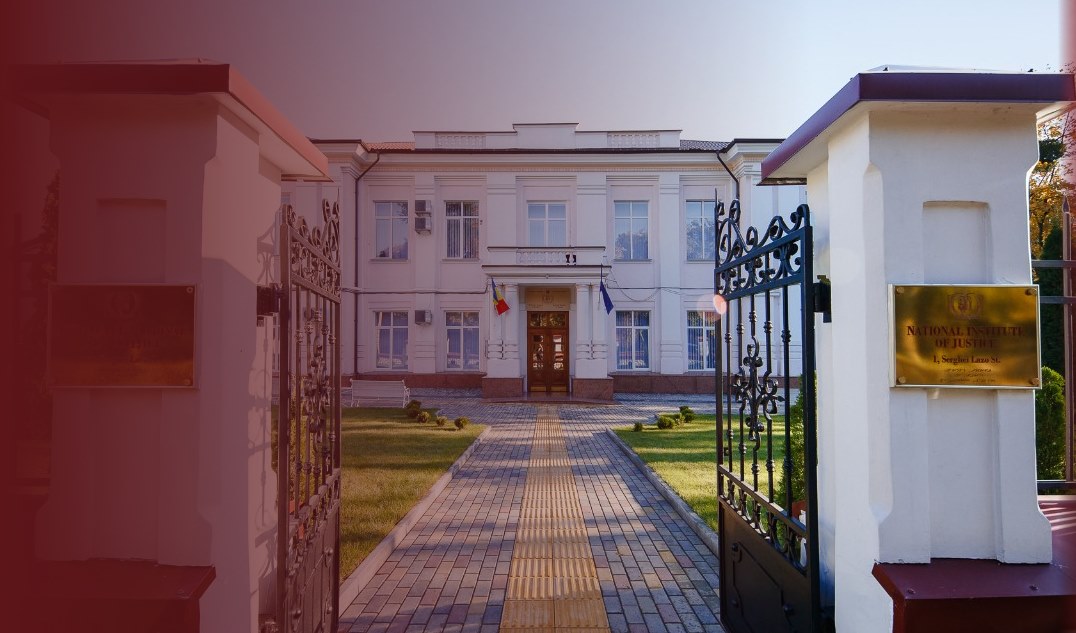„My father was a martyr. But, each of us judges individually about the realities...”
(Gleanings from an interview with Sergiu Remencu, son of Alexandra Remencu, the headmistress of the Children’s House during 1929-1940)
The Chisinau that we are thinking we “know by heart”, still hides entire manuals of untapped history. At all times and for all generations, the green city on the bank of the Bic river, was a swing for many personalities, which are strong rooted in Bessarabian history. I will remind just few names: Maria Cebotari, Meliţa Patrascu, Gurie Grosu, Ioan Pelivan, Pan Halippa, Sergiu Niţa, Theofil Ioncu, Dmitrie Remenco, Elena Alistar... The idea of this heading, the verbal history or spoken history, was suggested to me by Tatiana Cistova, the art critic, born in Chisinau, settled in Moscow, at present. Finding out that the head office of our newspaper is settled on Mateevici Street, Tatiana exclaimed: “I’m related to Alexei Mateevici on my father’s side. Better talk to my father …. He knows the history of the city and of many people who have made the history of this city that I love so much… Ask my father about my grandmother, Alexandra Remencu, who was invited by Pope to Vatican …”. Intrigued, I phoned Mr. Sergiu Remenco, who turned out to be a good interlocutor. This dialogue is far from being complete; a big part of the interwar Chisinau HISTORY has remained in my folder. Maybe, one day, I will gather these testimonies, high-value documents into a volume of verbal histories about our city. A history recounted about Chisinau, that part that hundreds of people have stored in memory...

A.S.: - Mr. Remenco, your are one of the few people that still remember Chisinau as it once was...I think of a history of Chisinau told by those who were born here, who lived through history...
- You should talk to Mr. Ion Lisnic and Boris Diacenco, my first trainer on shooting sport. I was eminent in this kind of sport, the laureate of USSR Spartakiad, two editions. There is still information about our family in the media, from the interwar period. But also in the volumes like “Basarabia necunoscută”, “Femei din Moldova” Encyclopaedia. It is true that I have not yet been able to gather the whole history of Remencu-Scodigor family in one book.
- Your daughter, Tatiana, has also confessed to me these days, that she has an archive waiting to be harnessed.
- Tatiana probably could do this. Let’s turn back to my family; you may be interested in my grandfather, Gheorghe Scodigor, my mother’s father, who was descending from a generation of priests. They were known in Chisinau. In a Hebrew newspaper, an article on persecutions of Jews was published, signed by Mr. Marinciuc. He remembers my grandfather because he then baptized the Jews children to left and to right. How to explain, the people then were differentiated in two large groups. So, one group was composed by provincial Bessarabians, and the other group was called “group of conquerors of the Old Kingdom”. Not long ago I met an old woman who remembers the priest...
- After returning from Romania, where did you study, what lyceum?
- In Chisinau, primary school no. 2, located above the republican stadium, on Bender Street. During the war, there was a little church at the corner. Today the University campus is there. More above there is a building. It was the school no. 2. I was eminent at school, I had the average score of 9,33.
- During what period did you study at school no. 2?
- Between 1942-43. Then, in the school year 1943-44, I studied at Hasdeu High School, the building of the current History Museum. It was a very prestigious high school, an extraordinary contest that I passed and, after the first year we all went to Romania.
- After the war started?
- Not when the war started, we left in 44.
- Where did you settle in Romania?
- In Gaiesti, at the northwest of Bucharest, about 70 km far, between Pitesti and Targoviste. That’s where I graduated the second year of high school and passed the external exams for the third grade. My brother remained in Bessarabia, he has been enrolled in the Red Army.
- What was the name of your brother who stayed in the occupied Bessarabia?
- Gheorghe Remenco, in honour of grandfather. He was the President of the Association for protection of historical and cultural monuments, he founded the association. Gheorghe was a fighter. He revived a lot of monuments like Donici’s mansion, it’s my brother’s work. He did a lot of good things. There was an interesting case related to churches. In 1946-47, during the famine, I don’t know how, but some Moldovans came to Moscow to meet Stalin. They didn’t get to Stalin, but their request was sent to the dictator and Kosighin arrived to Chisinau. My brother then was working in ATEM, so he was among those who met the delegation. Kosighin did not make a step through the city, he asked my brother to accompany him through the republic.
- Oh yes, someone told me about that visit of Kosighin. Is it true that the famine was stopped after that visit?
- You know, the situation calmed down. When Kosighin was leaving, he told my brother “if you happen to need me, write me”. So they agreed how to send the letters to reach the Russian official. He used that address only once in his life. In 1960, after a sensible earthquake, many churches suffered serious damages. Ion Gudă categorically prohibited the distribution of any cement for restoration of the churches. Absolutely nothing for churches. My brother then wrote to Kasighin, explaining that the churches make up our national heritage. He received a personal answer: „Nujnîie materialî, vam vîdelenî iz rezerva Soiuza” (“The resources you need are delivered from the Union’s reserve”). After a big scandal, he was called to SS and Ion Vodă cel Cumplit made him a spanking... After that case, Gheorghe didn’t get out of bed... They beat him up badly and...he died quickly. It was his last action. My brother was a great patriot, but the regime defeated him. The times were very complicated.
- Mr. Remenco, I have read somewhere that Florica Nita supported your mother very much in the work of Children’s House from Chisinau, the institution that was the benchmark for the entire country during the interwar period. Sergiu Nita, the husband of Florica, was the representative of Bessarabia in the Romania Government. How were you related to Nita family?
- Sergiu Nita was my grandmother’s brother, on the mother’s side. Sergiu entered the politics at the beginning of the century. He was brilliant in politics; he was graced with King Ferdinand’s friendship! Not everyone could be honoured with such relationships. The King considered him among the best friends. Sergiu and Florica Nita baptized me, so I was named Sergiu in the honour of my uncle. The baptismal certificate has disappeared somewhere through the archive. So, my godfather was about three times the minister of Bessarabia in the Romanian Government, a kind of governor of Bessarabia. Sergiu Nita has great deals under his belt: he was the initiator to lay the Stefan cel Mare Monument, he organised the funding, he made agreements, he negotiated with the sculptor Alexandru Plamadeala... the King Ferdinand was present at the unveiling of the monument. He was personally invited by Sergiu and as long as he stayed in Bessarabia, two or three days, he lived in Nitas’ house.
- Where the house of Sergiu and Florica Nita was located?
- On the Lazo Street, above Ştefan cel Mare, if you lift up, on the right. There’s no house left, they have demolished it. I barely remember him. I was small then. I don’t know my aunt Florica at all. She died in the year I was born.
- Where did have you been baptized, what church?
- My grandfather Gheorghe baptized me in the Church “Adormirea Maicii Domnului”. It still exists on the Bulgara Street, the upper part to Mateevici, near Kogalniceanu. My baptism was in 1933! My grandfather was very honoured by parishioners; he was the only priest who officiated at the Divine Liturgy during 1940-41. The soviets came, all the churches were closed and he had a lot of troubles, but he was still doing the service. As much as I remember him, as I had known his deeds, I consider him a Saint. Of course my mum was also a Romanian, she had a special education in the family and she was a great patriot in everything. My grandmother’s name was Nadejda Nita, sister of Sergiu Nita.
- And how did your father, the publicist Dumitru Remencu, arrive to the house of the priest Gheorghe Scodigor?

- My father was native of Bolhrad. During the war he was in the army, had troubles and he had to get out of there. Thus, he ran up, to Chisinau. Why? Because he had relatives there. His family was related to Mateevici family and there were still some relatives in Orhei. He ran away from Bolhrad and he needed papers. It was very strict then, he was Russian officer, he was at war. My father was a little bit clumsy, red-haired. Sergiu Nita organized to draw up the acts. At that time he went to my grandfather, who was the parish at the Church of Cioresti village. Everybody supported and helped him. And...in gratitude ...took away his daughter, the second daughter, whose name was Alexandra, my mother.
- Nice. Has your father spoken into Romanian?
- Yes. Sure. A perfect Romanian. My father was a writer, an appreciated intellectual. He was a good friend with the priest Vasile Ţepordei and other remarkable people of Bessarabia. When Russians came, all people have left the city, the war line was freaking us out, we were afraid. Our relatives have been subjected to repression... On the 13th of July 1940, my father committed suicide. The NKVD was screwing him, during one week they have phoned him 4-5 times per night. My father didn’t resist and he shot himself on the 13th of July, two weeks after the great liberation. Anyway he would have been taken to Siberia and they would have destroyed him there. I have seen some materials containing such accusations... there was no way they leave you alive. My father was a publicist, very known, a remarkable person...
- Where have your father been published?
- Officially, he was working in two Romanian newspapers, “Timpul” and “Astra”, at „Viata Basarabiei”. But he collaborated with many other newspapers.
- You have mentioned the name of the priest Tepordei... Have you met him?
- Then, in 40, my father took him to the train station. I was also there with them. Tepordei came to us the last night, too. They have been discussing all the night. We drove him to the train station together, the next day. I remember one phrase of Tepordei: “Dmitrii Ivanovici, odin şag, sdelai odin şag” (“Dmitrii Ivanovici, one step, just one step”)... And the train left.
My father was a martyr. But every person appreciates how he feels; every person judges individually everything that happened.
- Mr Remenco, let’s go back to the degree of relatedness with Alexie Mateevici.
- Alecu was the son of my aunt. Her name was Sofia. You have her photo here.
- They are relatives from your brother’s side?
- Yes, my brother Gheorghe, the one who was the founder of the Association for protection of monuments.
- Mr Remenco, how was your live when the Russians came?
- First of all, they left us alone, after my father’s death, thank God. You know, they were careful to make good impression, the supply was good.
- But what did they tell you about your father, where he was?
- Actually, I didn’t ask. My father was coming home late, he was working a lot. The first Easter days, the NKVD organized great searches in our house. All the materials were loaded and disappeared without trace. One or two days after, a new headmistress came and threw us out of the house. We stayed at Iulia Kveatkovski few days. She was the chief of Socialists-Revolutionaries. Her brother was hanged together with Lenin’s brother. They took refuge here, in Chisinau, during the revolution. She has rented an ophthalmological Clinic, the unit of the hospital for children. We have stayed at Kveatkovskis’ for a few days, but she was also thrown out the house after a week. They took her house and she was living in a stable.
- It is strange, but the witnesses passing through the orphanage house are getting less, but the building still resist even today. Are you often passing by?
- I was there not long ago. The rector of the institution invited me and I walked through all the rooms. Too heavy feelings... Our house had two levels, with two columns at the entry and one beautiful staircase up to the second level. The stairs were of marble, very large, to make it easy for children to climb and descend. I’m very glad they have restored her and it is like it was in the past, with a different balustrade only. When I stepped on it and felt its vibration, I was feeling like I went back to those times. On the second floor there were the girls’ bedrooms, the classrooms, equipped to organize different activities. The school had also a church. It was settled on the right branch of the building. It had a mini altar with the pulpit. The services were on Sunday. We were climbing up to church, listening to the service and then were getting down and having the lunch. My father stayed there discussing with the priest. The church was also visited by the city people living around the orphanage. I remember there was a small bell tower, where the bell rang, in front of the building, under the chapel’s windows. I can still hear it ...
- Mr Remenco, You have memory to envy! Thank You for this precious information about the people of the yesterday Chisinau. It was a great joy to talk to you. You should write a history of Scodigor-Nita-Mateevici-Remencu family... We will wait for it.
Dialogue with Antonina SÂRBU
Photos:
- Sergiu Remenu
- Dumitru Remencu
